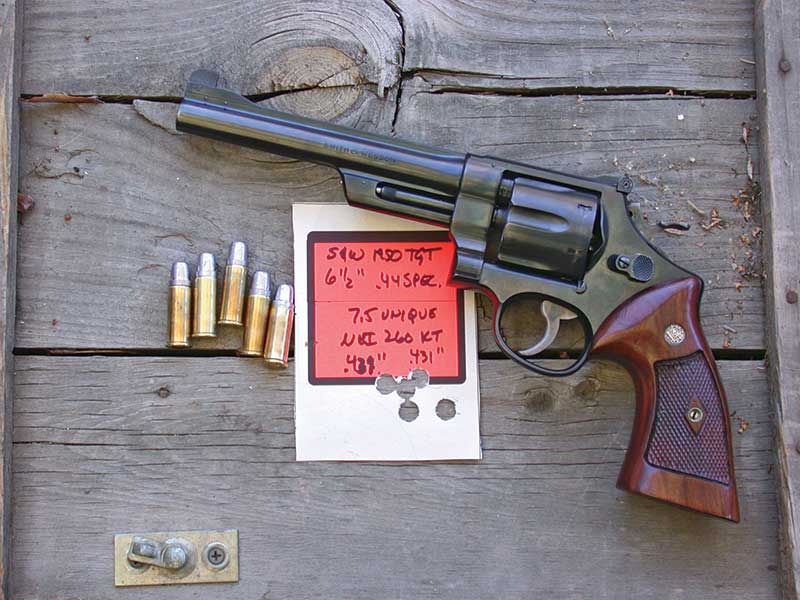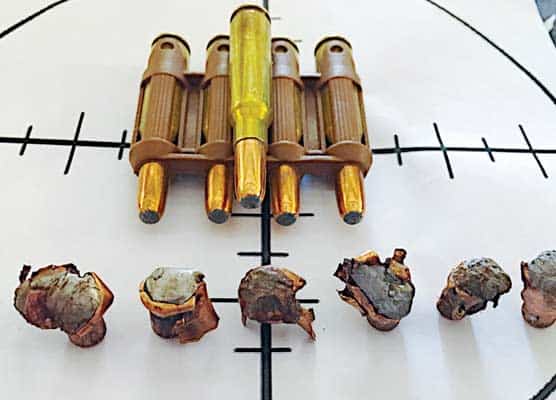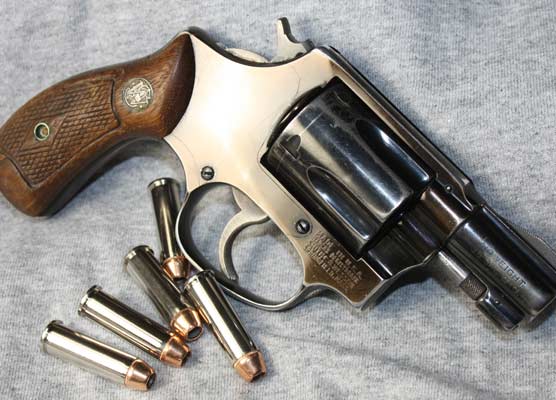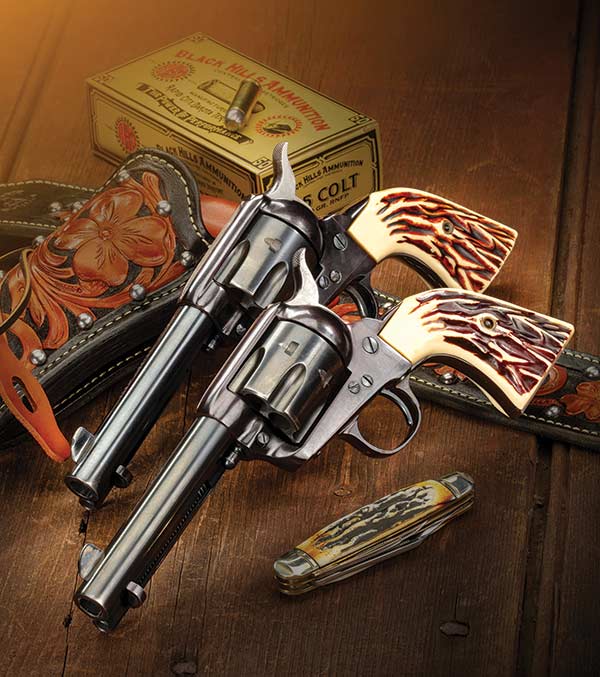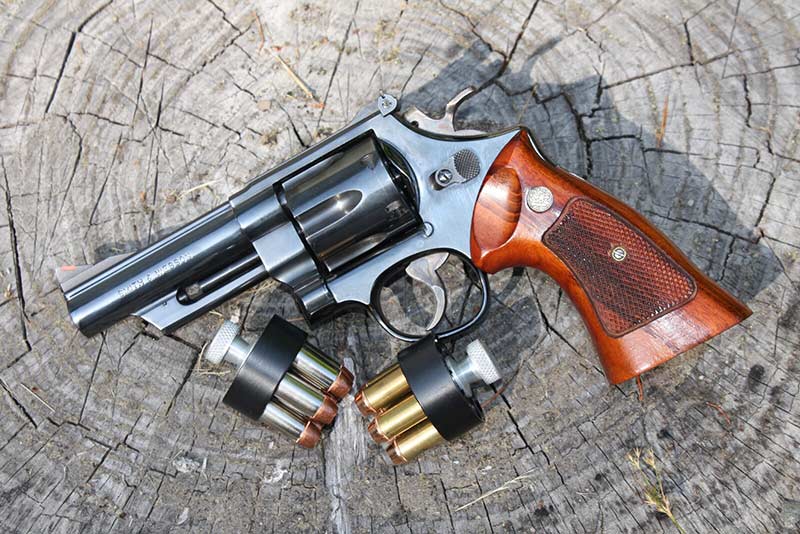“This Gun Won’t Shoot!”
Let’s try an obvious fix first
I recently received a call from my friend Jim Martin. Jim is an even older guy than I am, an expert in fast draw and gun spinning, a top-notch tunesmith when it comes to Colt Single Actions. He is also the man who rebuilt the Great Western .45s, which appeared on the cover of the first issue of GUNS in January 1955, so I could shoot them for the 50th Anniversary issue. Jim had recently tuned and tightened a 3rd Generation 7-1/2″ New Frontier .44 Special and informed me the owner said it wouldn’t shoot. “He will sell it for $600…” and that’s where I immediately interrupted him and said, “I will take it!”
I had a pretty good idea why it wouldn’t shoot and made arrangements for it to be shipped to my FFL dealer, Buckhorn Gun & Pawn. It arrived the next morning and within an hour, I had it shooting 1-hole groups. Martin had done a magnificent job tuning it to perfection and tightening up the cylinder by installing an oversized bolt. When I received it the first thing I noticed was the rear sight was cranked high enough it was obvious the previous owner had been shooting 200-grain bullets, which were probably intended for the .44-40 and also probably sized at .427″. The latter is precisely why it probably wouldn’t shoot.
Using plug gauges I found the cylinder throats of the New Frontier to be a uniform .433″. Shooting .427″ bullets through such a cylinder is a guarantee of mediocre accuracy. The largest bullets I had loaded in .44 Special cases measured .431″, and over 7.5 grains of Universal they shot superbly in the new New Frontier. The reason this sixgun couldn’t shoot was easily traced to the ammunition.
In my early sixgunnin’ years, I religiously measured the groove diameter of sixgun barrels by tapping a pure lead slug down the barrel with a wooden dowel and then trying to measure the diameter of the bullet. Enlightenment came when I finally realized the barrel diameter was not the most critical measurement. The chamber throats of the cylinder matter the most, as cast bullets pass through these tunnels long before they arrive at the barrel rifling. The less distortion when they get there the better. When this became apparent to me, I stopped measuring barrels and with .44 and .45 sixguns, gathered sizing dies from .428″ to .432″ for the .44, and .451″ to .454″ for the .45 and simply used the largest bullet which could be pushed through the cylinder throats.
Several years ago, I received a phone call from a distressed local reader who related he had been on the phone practically every day the last week with Smith & Wesson complaining about his three Model 629s. He had all three barrel lengths, 4″, 6″ and 8-3/8″. None of them would shoot. Now right away I knew something had to definitely be wrong. You might get a new revolver that would not shoot, but three of them at the same time?
He asked if I would be chronographing anytime in the near future and if so, if he could chronograph his Smith & Wessons. Now I didn’t have the slightest idea what chronographing would prove, however, I did set up an appointment. I already had a pretty good idea of why his sixguns wouldn’t shoot. I surmised it had to be either poor ammunition or poor shooting on his part. So just to be sure, I took along some of my own .44 Magnum reloads.
Break The Rule
We rendezvoused, he shot his three revolvers and he was right, they certainly did not shoot very well. “Well, let me try them.” I did and they still did not shoot very well. Since we were in such a dire situation, I broke an almost unbreakable rule of mine, which is: never shoot my reloads in someone else’s guns. However, I had noticed something about his ammunition. Without saying a thing to him about his loads, I tried some of my own, which were loaded with the same Keith bullets.
With the short-barreled .44 Magnum using my loads the groups were not spectacular, but certainly passable. They tightened up with the 6″ sixgun and then the group from the 8-3/8″ was as good as it gets with all holes touching. I turned around, looked at him and said: “I think you better call Smith & Wesson and apologize.” The problem was not the sixguns, nor even his shooting, rather his loads. I had noticed the lack of a good crimp on his loads. Every time one of those loads was fired, the remaining rounds in the cylinder would allow the bullets to move forward which played havoc with accuracy. He was, of course embarrassed, but at least the problem was solved. Once again, the problem was ammunition.
Porting
A gunsmith sent me a custom ported Smith & Wesson Model 29 complete with a scope in place. He wanted me to test the recoil reducing effect of his newly designed porting. I fired the first shot and it felt pretty good. After firing the second shot, my eyes started to cloud up a bit, as they will do when tired; at the third shot my first thought was I’m not feeling this tired! It was easy to discover the problem. The ports were perfectly designed to throw all the trash back on the front of the scope. By the third shot the light gathering qualities had been diminished significantly. I felt a little sorry for the gunsmith going to all the trouble and sending me a revolver with porting incompatible with a scope.
Porting also turned out to be a problem with a custom Contender barrel. The cast-bullets supplier sent a supply of his gas-checked 7mm bullets along with a scoped barrel. I called him and asked if he had thoroughly tested this barrel, as quite often, ported barrels will not work with cast bullets. He replied, “Oh yes, the maker of the barrel had completely tested it.” I fired several rounds and the bullets were everywhere! I called him back and related my results, he went back to the barrel maker, who went to his employee, who admitted he had not even fired a single load through the barrel.
Have I ever had factory guns which would not shoot? Smith & Wesson once sent me a .44 Magnum that would not shoot at all. This problem was an easy fix; they had sent a display gun from the SHOT Show and forgot to replace the firing pin. The same thing happened years ago with a Magnum Research Desert Eagle. When we tried to shoot it we discovered once again there was no firing pin. Someone had mistakenly shipped their photography sample to me. I once opened a Dan Wesson box to find no barrel included. It wasn’t hard to figure out it would not shoot!
Shortly after the 10mm arrived a company sent me a brand-new design, a radical departure from the standard semi-automatic. It came from Europe with a special barrel. I tried to shoot it on paper at 25 yards using an 18×24″ piece of poster board. I could not keep all the shots on paper. I used a black felt tip pen to make a small little target in one corner, stitched it with a magazine full from a Smith & Wesson 1006, folded the target to make a its own envelope, and sent it off to the president of the company. A few days later I received a phone call asking me to please send that gun back. The radical new design was never seen again.
Yes, there are guns out there that won’t shoot, but they are awfully difficult to find. If a gun won’t shoot the first thing to check is ammunition, which is most always the problem. The next step is to check the shooter and in fact, have several people of known ability shoot the same gun. If it still won’t shoot then it is time to look for a real problem. I love it when someone tells me “This gun won’t shoot!” as I know I may buy a really good sixgun for a small price. Did I ever tell you about the 7-1/2″ Ruger .44 Magnum Flat-Top I got at a ridiculously low price because it wouldn’t shoot?
